Programmatic SEO is creating SEO pages following a repeatable pattern in bulk, in a scalable way, using automations.
This doesn’t mean you need programming – it just means that you need:
- Databases with your variables listed in the rows, and the criteria for comparison listed in columns;
- Templates for your blog posts / pages – formulaic template text with variable text in it – that will be replaced with variables from the template + whole paragraphs from the database.
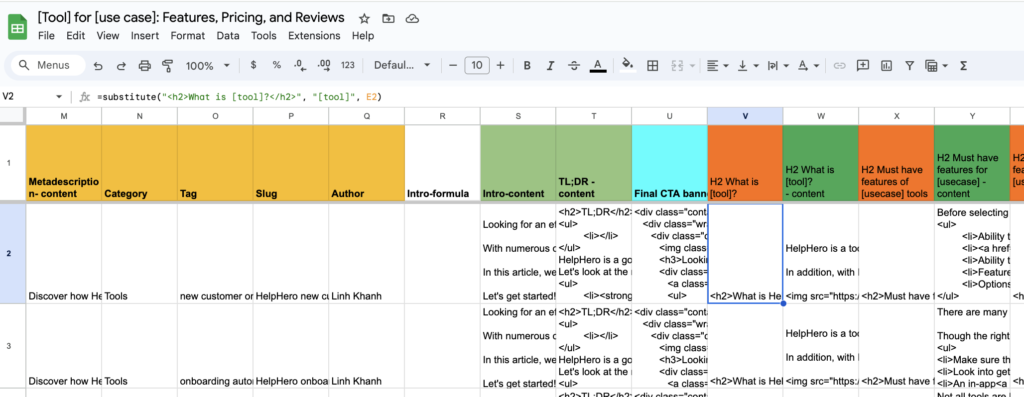
If you’re using Google Sheets for your programmatic SEO, the variables in the templates will be filled with the actual keywords using substitution formulas, while whole paragraphs and images will be fetched from databases using VLOOKUP and INDEX+ MATCH formulas (depending on whether you’re fetching a single variable entry – e.g. “tool description”, or a combination of two variables e.g. “tool description…for a specific use case”.
How to do keyword research for Programmatic SEO?
There are some common principles behind programmatic SEO that dictate how you should do your KW research. The blog posts generated with programmatic SEO templates should follow certain fixed patterns, e.g.:
- Best {use case} tools / software
- {Tool1} alternatives and competitors
- What is…{use case} + Question (e.g. how to {verb} {use case})
- [N] Best {use case} tactics that actually work
- Best {use case} services / agencies for your business / {industry}
The words in curly brackets {} are your variables – keywords that you are going to put into ideally several different templates to cover different search intents, that you’re going to build databases for, and generate posts from those databases and templates in a scalable way.
But how do you find your variables? 🤔
And how do you decide which templates you’re going to produce?
- Sometimes coming up with programmatic templates is quite obvious – e.g. everybody needs a template like “How to do keyword research for Programmatic SEO? ” or “Best {use case} tools/software”
But some programmatic templates you can use are not that straightforward. And it may be helpful for you to reverse-engineer the process by first classifying your KWs by epics, then coming up with topics for each KW corresponding to the search intent, and then looking for patterns of variables within the keywords, and coming up with programmatic templates that could generate content for these variable patterns.
How to create your programmatic SEO databases?
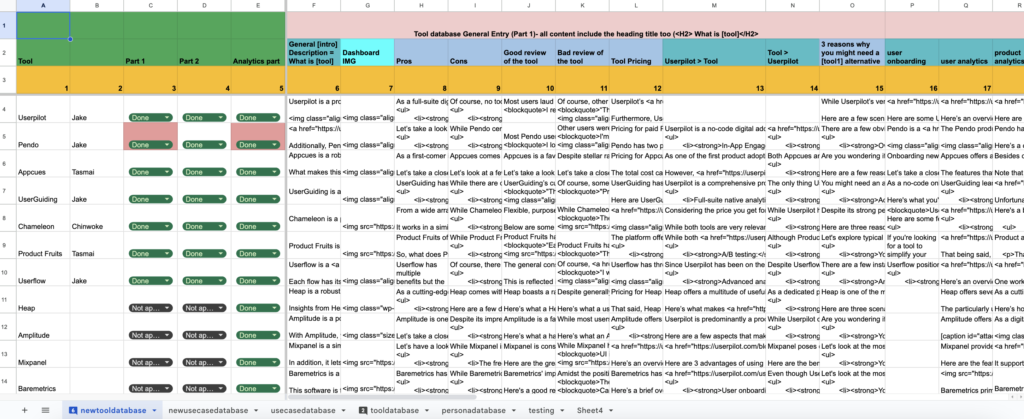
To create a databases for your programmatic SEO strategy, you need to create a separate sheet (database) for each variable type – tools, use cases, personas, metrics etc.
Then, you list all the criteria you’ll be comparing each variable (e.g. tool, use case) for – horizontally- in separate columns in a Google sheet, e.g.
- general tool description
- dashboard image
- pros
- cons
- features
- feature 1 description
- feature 2 description
- feature 3 description
- pricing
- tool for use case 1
- tool for use case 2…etc.
How to create your programmatic SEO templates?
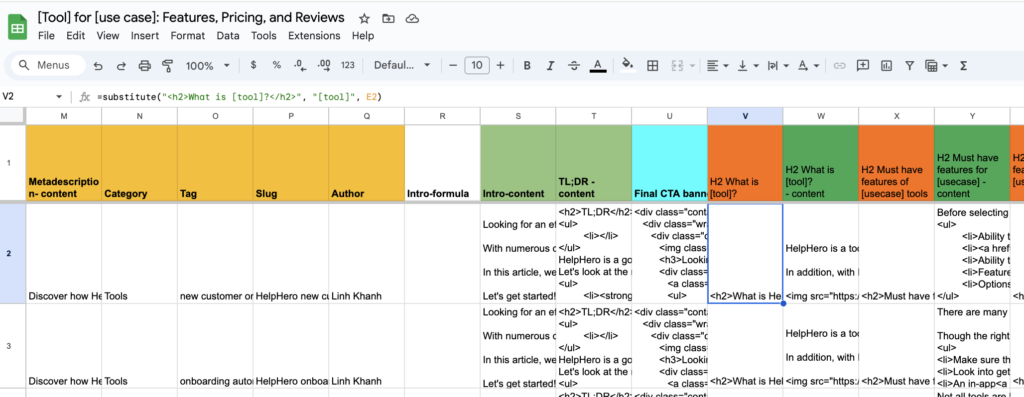
To create programmatic templates:
Research SERPs for one KW combination from one pattern.
Write down an outline for the blog post
Write copy for each paragraph
Replace any information specific to the particular tool, use case etc. with variable name in e.g. brackets ( { } ) e.g.
{Tool1}, {Tool2}, {Tool 1 General tool description},
{Tool 1 dashboard image}, {Tool 1 pricing} etc.
NOW: Replace any information specific to the particular tool, use case etc. with variable name in e.g. brackets ( { } ) e.g.
{Tool1}, {Tool2}, {Tool 1 General tool description},
{Tool 1 dashboard image}, {Tool 1 pricing} etc.
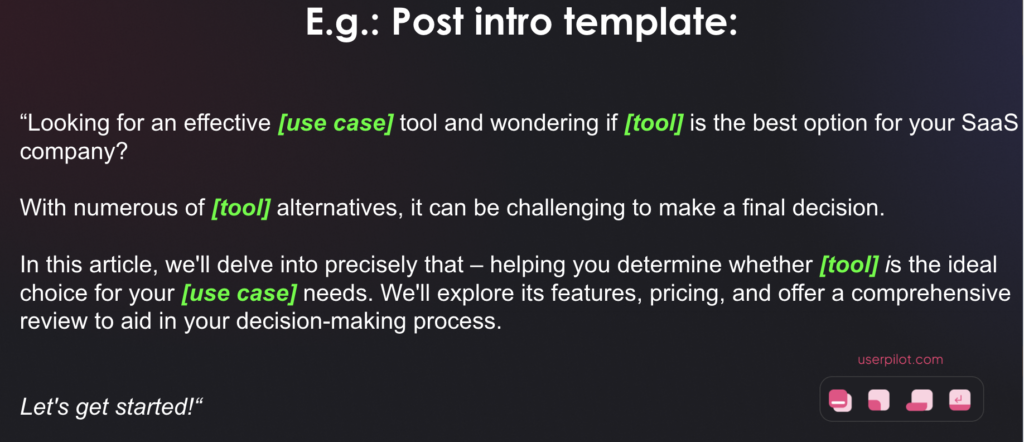
Essentially – each heading, image & paragraph of your blog – is a new column in your template.
This is like writing your post, only “horizontally” instead of vertically.
You will need 3 types of columns:
- Metatext columns:
- Post title, Slug, KW(s), metatitle, metadescription, excerpt etc. + your variables
- Content columns:
- Each heading, paragraph content and image that appear from your “outline” in subsequent columns of the sheet
- Output column(s): with the final blog post content that will be imported into your CMS
Fetching information from Databases with Template Formulas
How do you move your content from the databases into the right place in your programmatic templates?
This is where the formulas come into play.
The meta columns and heading columns are populated using substitution formulas.
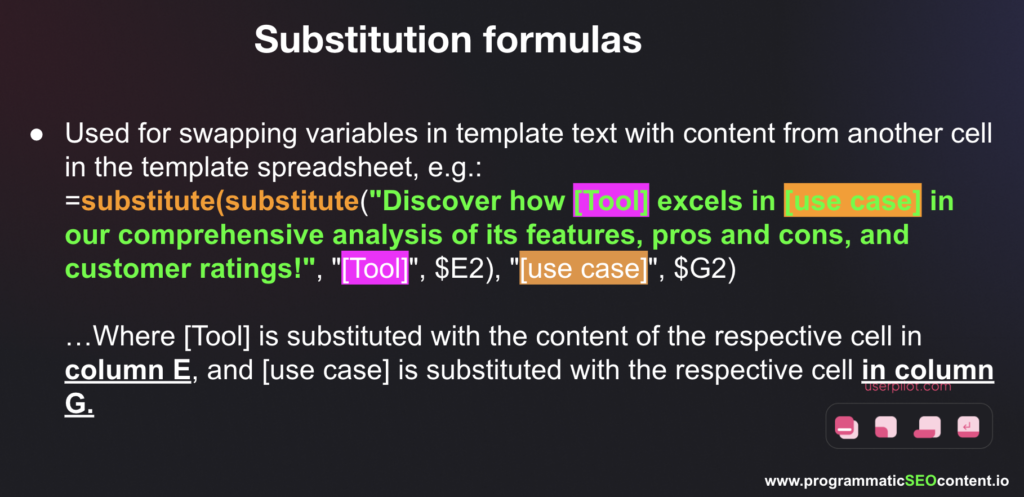
For content columns, there are two main types: content paragraph columns and image columns, which are filled in using VLOOKUP formulas for single variable entries…
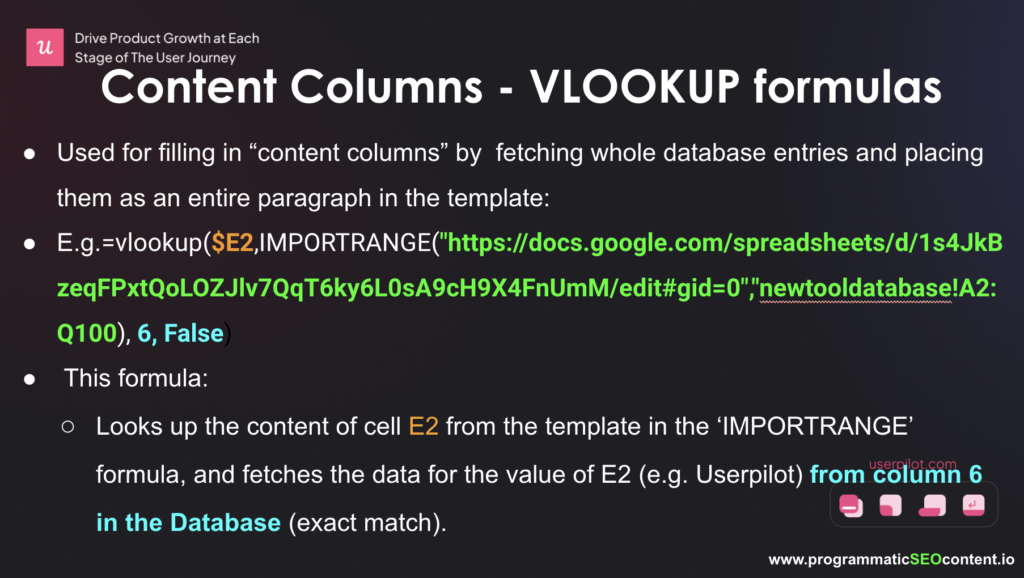
…and a combination of INDEX and MATCH formulas for entries involving two variables, such as “Tool1 for usecase1”.
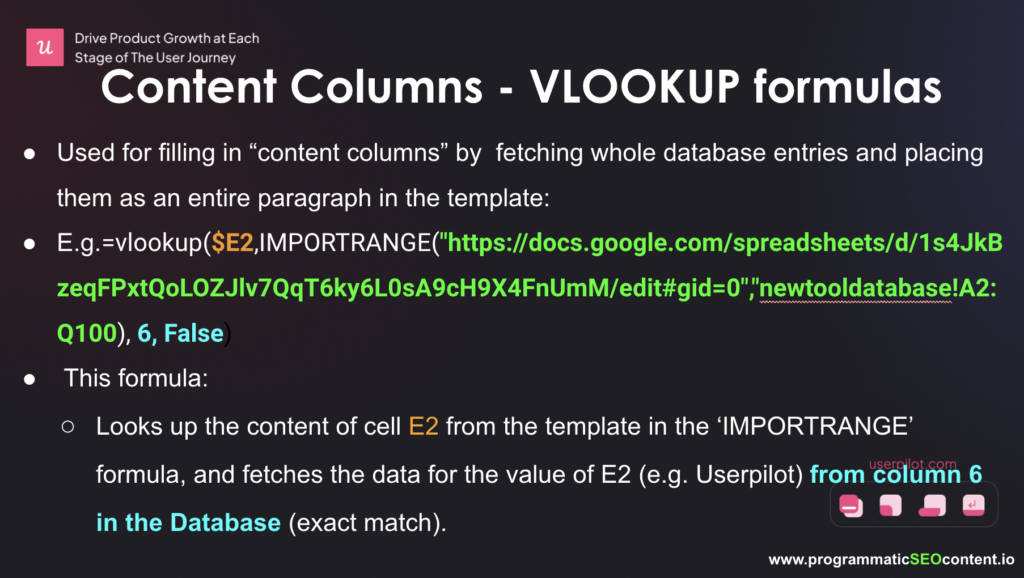
Finally, the final content output columns are completed using the CONCATENATE formula. This formula simply pulls the content of all your content columns (headings, images and paragraphs) in the right order into one cell – which you will later map into your “post body”:

And that’s all you need to know to create your programmatic SEO databases and templates without programming, using just google sheets!
If you don’t want to go through the process yourself – simply head to our template store and buy ready-to-use programmatic SEO templates with linked databases done for you for your SaaS!